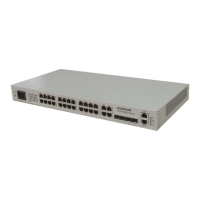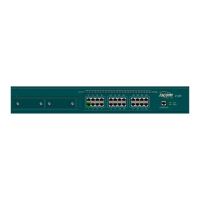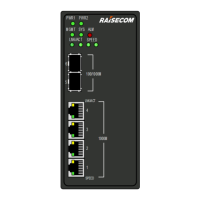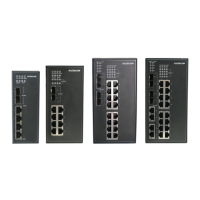Raisecom
ISCOM2600G-HI (A) Series Configuration Guide
Raisecom Proprietary and Confidential
Copyright © Raisecom Technology Co., Ltd.
Training, cooperative operations communications, such as: distance education,
telemedicine
Data warehousing and financial applications (stock)
Any other point-to-multipoint applications
Basic concepts in multicast
Multicast group
A multicast group refers to the recipient set using the same IP multicast address identification.
Any user host (or other receiving device) will become a member of the group after joining the
multicast group. They can identify and receive multicast data with the destination address as
IP multicast address.
Multicast group members
Each host joining a multicast group will become a member of the multicast group. Multicast
group members are dynamic, and hosts can join or leave multicast group at any time. Group
members may be widely distributed in any part of the network.
Multicast source
A multicast source refers to a server which regards multicast group address as the destination
address to send IP packet. A multicast source can send data to multiple multicast groups;
multiple multicast sources can send to a multicast group.
Multicast router
A multicast router is a router that supports Layer 3 multicast. The multicast router can achieve
multicast routing and guide multicast packet forwarding, and provide multicast group member
management to distal segment connecting with users.
Routed interface
A routed interface refers to the interface towards the multicast router between a multicast
router and a host. The ISCOM2600G-HI series switch receives multicast packets from this
interface.
Member interface
Known as the Rx interface, a member interface is the interface towards the host between
multicast router and the host. The ISCOM2600G-HI series switch sends multicast packets
from this interface.
Figure 8-2 shows basic concepts in multicast.

